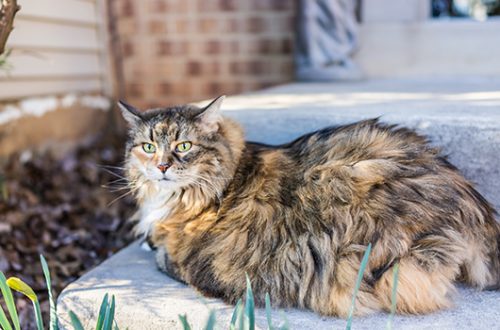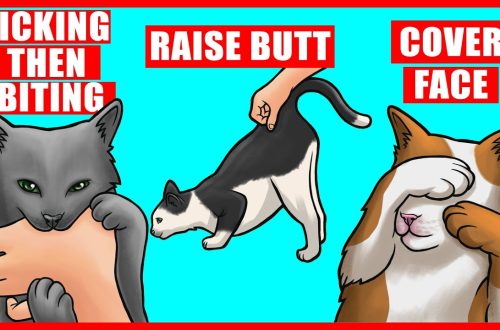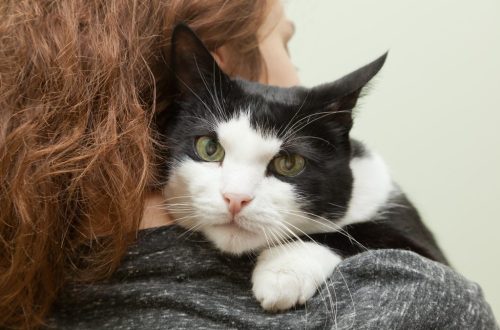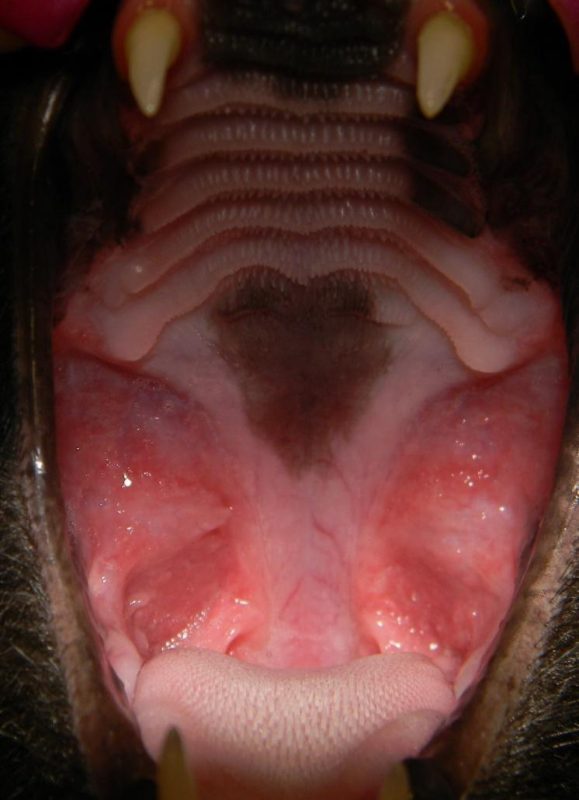
Signs of stomatitis in cats and its treatment
Stomatitis in cats, also called feline stomatitis or chronic feline gingivostomatitis, is an inflammation of the mouth that is very common, painful, and affects pets of all breeds and ages. While stomatitis can be fatal in some cases, proper treatment can help your cat live comfortably with the disease.
Contents
What is feline stomatitis
Stomatitis in cats is a general term for extensive, chronic, and painful inflammation in the mouth. According to the Massachusetts Society for the Prevention of Cruelty to Animals, this disease affects up to 4% of cats. There are two main forms of stomatitis. In one form, the gums surrounding the teeth become inflamed, and the second form, called caudal stomatitis or faucitis, affects the back of the mouth where the upper and lower jaws meet.
Causes of stomatitis in cats
Scientists have found that affected cats experience changes in the immune system, but their nature remains unclear. Viruses, bacteria, and periodontal disease are thought to contribute to the development of the disease, but experts don’t know what exactly causes the affected pet’s immune system to malfunction in response to plaque and bacteria.
Some research suggests a link between stomatitis and calicivirus, which causes upper respiratory illness in cats. Viruses that affect the immune system, such as feline leukemia virus and feline immunodeficiency virus, may also play a role. The only thing scientists know for sure is that affected cats develop a disproportionate reaction to plaque and bacteria, leading to excessive inflammation in the mouth.
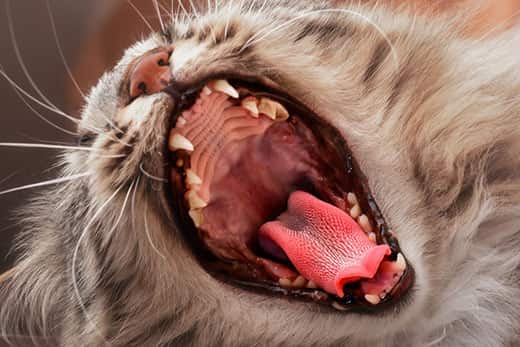
Stomatitis in a cat: symptoms
Symptoms of stomatitis are associated with inflammation, which means that reddening of the gums in a cat will simply be impossible not to notice. The affected areas in the cat’s mouth are usually bright red and bleed slightly. Stomatitis also causes bad breath, increased salivation, and excessive swallowing in cats.
Since this disease is often associated with pain, the cat may refuse to eat and wash, chatter her teeth, or constantly touch her muzzle with her paw. Sometimes animals with stomatitis become thin and unkempt, some have matted coats and are underweight.
What does stomatitis look like in cats?
There is no specific test for stomatitis in cats. The diagnosis is based on the cat’s history and physical examination. Your veterinarian may recommend additional tests, such as tests for feline leukemia virus and feline immunodeficiency virus, complete blood count, and urinalysis. These tests will rule out other diseases that can cause inflammation in the mouth, including resorptive lesions of the teeth, liver disease, kidney disease, and cancer. In addition, dental x-rays and a complete oral examination are usually recommended. Depending on what the veterinarian finds during the examination of the cat’s mouth, they may suggest a biopsy.
How to treat stomatitis in cats
Treatment for stomatitis in cats depends on many factors, including the severity of the disease and the pet’s response to treatment. Since the true causes of stomatitis in animals remain unknown, there is no specific treatment for this disease. However, there are many ways to help a cat cope with an illness.
If a cat is diagnosed with stomatitis, regular veterinary and dental care will give her the best chance of successful treatment. To relieve pain, the first step to treatment will be pain relief with medication. If the animal has an oral infection, the veterinarian may prescribe antibiotics. Since periodontal disease is associated with stomatitis, the doctor will likely recommend yearly dental care for the animal, including x-rays and a thorough cleaning. This will be useful even for those cats who do not yet have problems with oral health.
With proper treatment of stomatitis, long-term results in pets can vary. Even with regular dental care, many animals with stomatitis require long-term anti-inflammatory drugs and intermittent antibiotic therapy to control inflammation.
If the cat does not respond well to treatment, the veterinarian will most likely recommend that her teeth be removed. The surface of the teeth creates a favorable environment for bacteria to multiply, causing an overreaction from the immune system, and the removal of teeth eliminates the possibility of bacterial colonization. In most cases, molars and premolars are removed in cats. After this procedure, the animals usually feel very well and, when the wounds heal, they begin to eat better. In fact, some cats without teeth can even eat dry food.
The role of nutrition in the treatment of stomatitis in cats
Animals suffering from feline stomatitis may find it too painful to eat solid food. If the pet has stomatitis, you should either transfer it to soft canned food, or soak the dry food with water. Some cats find it difficult to eat even canned food, in which case they may need to be pureed until the gums are healed.
Despite the fact that stomatitis in cats is extremely painful, many cases of the disease respond well to treatment and the pet may well return to a normal quality of life.
See also:
How to keep your cat’s teeth healthy at home



